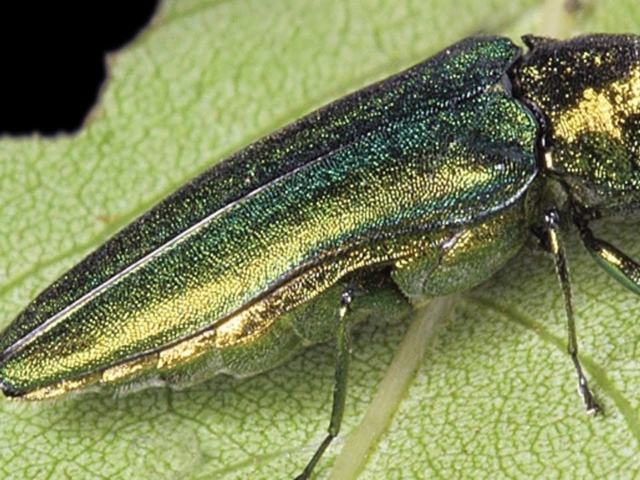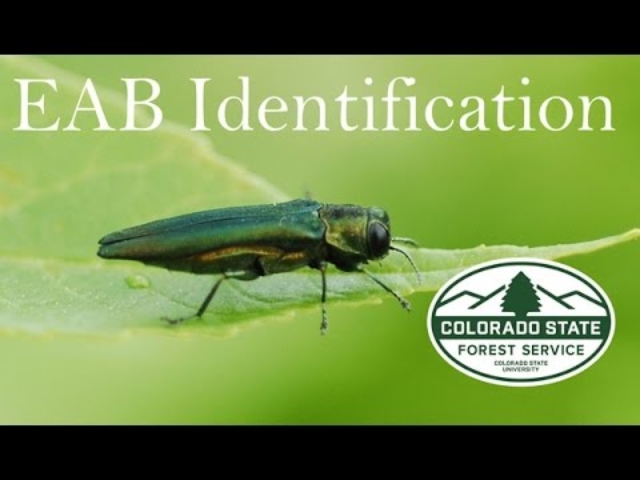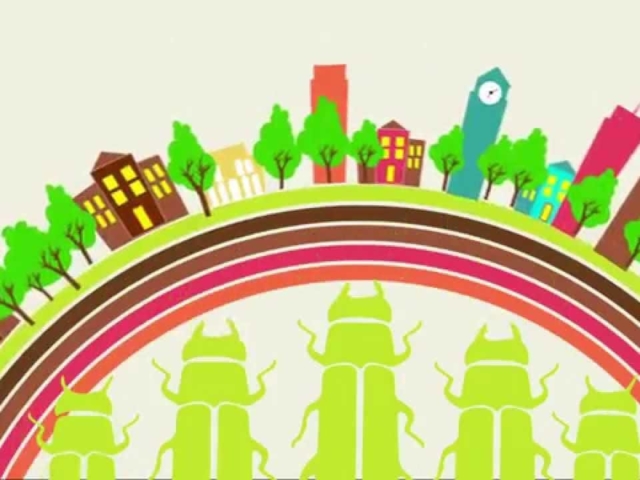Understanding Emerald Ash Borer
Emerald ash borer is considered the most destructive forest pest ever in North America. It is responsible for killing more than 50 million ash trees in 29 states. Across the front range of Colorado, 1 out of 6 trees are at risk.
Identifying if you have an ash tree
Plants form foliage buds in two ways – opposite and alternate. That is, the buds (leaves) are either directly across from each other (opposite) or found on different positions along the branch (alternate). The foliage buds in ash trees are found on opposite sides of the twig.
The leaves of ash trees are also distinct in that they are formed in 5 – 11 leaflets. The only other tree that has both alternate buds and leaves formed in leaflets is the boxelder. Boxelder always has either 3 or 5 leaflets.
Effectiveness of treatment
Under experimental conditions, most results indicate a 90 percent or higher success rate. In practical applications, success rates for insecticide treatments are at least 80 percent effective. Why the difference? Trees treated early, and in good vigor, have the highest success rate.
The insecticides used to combat EAB are nearly all systemic. That means the insecticide is placed in the soil or injected directly into the trunk of the tree. The insecticide is taken up into the tree via the vascular system. Emerald ash borer and other ash borers feed in that vascular system as well. When the insects have compromised the vascular system, the insecticide is not able to disperse evenly throughout the tree.
In addition to treating for EAB, trees should also be pruned while following other good horticultural practices emphasizing tree health.
How long to treat
Emerald ash borer infestations follow a definite curve. For the first 3 years, EAB goes undetected while it’s infesting trees. During the next 2 to 3 years, borer populations build. During this “cusp” period, preventive treatments are recommended. For the next 10 years, the borer goes through an exponential growth phase.
Treatments for EAB are essential. The result: most of the treated trees live, while nearly all the untreated trees die. With few trees left for EAB to infest, the populations of EAB will decline rapidly. Researchers in the mid-west are now looking at this post mortality phase. It looks as if treatments may be scaled back after this period.
What to expect from treatment
If the tree is not treated it will die, that is a known fact. Some have asked, “If I treat my tree, will it look the same as it does now?” Maybe…and maybe not.
While the success rate for insecticide treatment is very high, when emerald ash borer becomes prolific, they will challenge the tree – or begin feeding on the tree before the insecticide controls them. Thus ash trees, even when treated, will accumulate more dead branches than normal and have a more sparse appearance to the tree canopy. When the EAB mortality curve subsides, the ash should return to its normal vigor.
So what does that mean for you? Sooner than later, if you have an ash tree, you need to plan ahead especially if you are in the Denver metro area. Waiting to treat until AFTER EAB in Denver is discovered on your property or an adjacent property is NOT a good strategy.
Suitable trees to replace an ash tree
We recommend the following trees should you choose to replace an ash tree on your property: big tooth maple, state street maple, pink sensation boxelder, caddo sugar maple, western catalpa, honeylocust, Kentucky coffee tree, Texas red oak, bur oak, chinkapin oak, English oak, shumard oak, London planetree, chokecherry, linden, hackberry.








